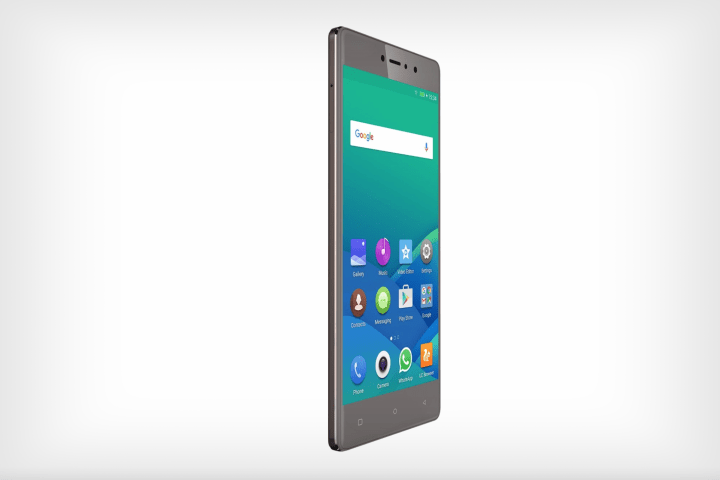
The marquee feature of the S6s is its front-facing 8-megapixel camera with f/2.2 aperture and LED flash. If the flash module is not enough, the 5.5-inch, 1,920 x 1,080 resolution display will light up to give your selfies more to show when taking them in the dark. Not to be outdone, the rear camera weighs in at 13MP and also features an LED flash. Gionee tries to take advantage of both sensors by packing the camera software with features like Ultra Pixel, which stitches multiple images to create one gigantic 120MP image.
Continuing our tour of the outside, the S6s features a metal unibody design with chamfered edges, with the rear-mounted fingerprint sensor supporting up to five fingerprints.
Elsewhere, a 1.3GHz octa-core MediaTek MT6753 chipset and 3GB RAM power the S6s, with the 32GB of internal storage expandable through the MicroSD card slot. If the storage is plenty for your needs, however, you can turn the MicroSD card slot into a second SIM card slot, especially useful when traveling overseas. Keeping the lights on is a 3,150mAh battery, which should provide enough juice to make the S6s an all-day affair.
Finally, the S6s runs Gionee’s Amigo 3.0 above Android Marshmallow, though there is no indication as to whether the phone will be updated to Nougat.
Unfortunately, the S6s seems destined for the Indian market, though the phone is the latest opportunity for U.S. consumers to take a peek at what Gionee has to offer. The phone will be available sometime soon in Latte Gold and Mocha Gold.
Editors' Recommendations
- Samsung’s newest Android tablet is a perfect iPad alternative
- Samsung Galaxy S21 FE 5G vs. Google Pixel 6 camera shootout
- Samsung Galaxy S22 and S22 Plus hands-on: All-new on the inside
- Google Pixel 6 Pro vs. Samsung Galaxy S21 Ultra
- How to use the Google Pixel 6’s clever Action Pan and Long Exposure camera modes
